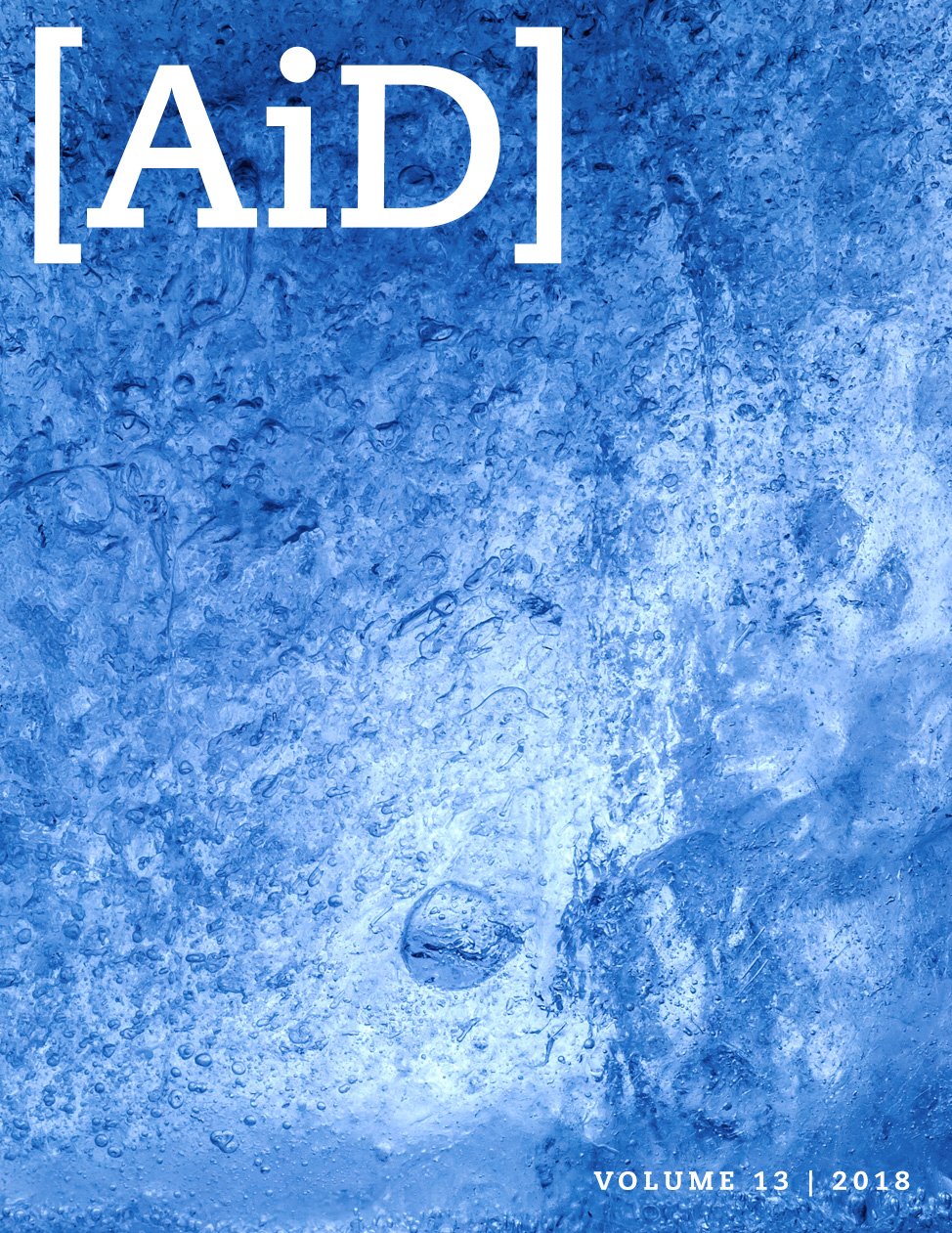
The Tug of War Between Genetics and Archaeology
Abstract
Mass migrations flooded Europe during the post-Babel Ice Age and the early post-Ice Age periods. What was once thought of as a single culture, the Bell Beaker culture has now been shown to have been two distinct cultures which had a unique pottery style that came to dominate Europe. Was this done through conquest, trade or cultural assimilation? The archaeology and the genetics seemed to be at odds on this subject. This article will examine the data and also look at how the Table of Nations in Genesis 10 provides unique insight on this topic.
At-a-Glance
- Europe was hit with waves of migration during the Ice Age and early post Ice Age.
- The migrating and invading Bell Beaker complex consisted of two distinct populations.
- Some areas escaped conquest by the Eurasian Bell Beaker peoples, others were almost completely wiped out and replaced.
- Genesis 10 and 11 correlates well with and make sense of the genetic and archaeological data.
In our quest to understand the history of the world, the fields of archaeology and genetics are often at odds and simply do not match up. But there are rare instances where they complement each other.
A recent article and paper in the journal Nature highlighted the sometimes-uneasy truce between archaeological findings and genomic studies.1 The occasional conflict between the two can lead to differing conclusions or overturning previously held ideas about the history of a site. This was brought out in the journal paper and article (above) about the Beaker culture.
Burial Mounds, Bones, and Bell Beakers
In older traditional archaeological studies, pottery types or styles are often one of the most significant methods of dating a civilization (after radiocarbon dating) or defining one. Later shifts in archaeological thinking began to deemphasize such sweeping claims, but still often associate pottery types with specific cultures. Changing pottery types would then signify either a change in occupying culture at a given site, or a new style that the native culture adopted or invented.
In southwestern England about 19 miles (30 km) from Stonehenge, near the town of Avebury, there is a long barrow (grave burrowed under a hill or mound) that housed the remains of up to 46 individuals.2 Conventionally dated at 3600 BC,3 the area was believed to have been occupied continuously until 2450 BC. There is evidence of people returning to the gravesite and bringing memorials of pottery and beads for close to a thousand years.4
During this period (dated c. 2750–2500 BC5) a new pottery style had emerged in Eastern Europe, and this new bell-shaped style (hereafter called Bell Beaker) had swept across Central, Western, and Northern Europe and taken over England as well. Discussion among archaeologists centered on whether this was a migration effect or a cultural contact/trade effect. It just so happens that the West Kennet Long Barrow (mentioned above) and a large genomic project taken from samples of burials across Europe both shed light on the answer.

Pottery from the Bell Beaker culture on display at the Museum für Vor- und Frühgeschichte, Berlin. Image by Alfons Åberg, via Wikimedia Commons.
Dead Men Do Tell Tales (But Not Their Age)
The Bell Beaker culture, as it came to be known, was hypothesized to have had an origin in the Iberian Peninsula (Spain and Portugal) because the earliest dated (c. 2700 BC6) Bell Beaker pottery came from a site near Lisbon, Portugal.7 But other archaeologists disagreed and posited an Eastern European origin for the Bell Beaker culture with the Yamna (or Yamnaya) culture being responsible.8 The recent Nature journal article found that both were true, in part.9
The authors of the Nature paper generated new DNA sequence data from 400 ancient Europeans conventionally dated to between c. 4700 and 800 BC,10 excavated from 136 different sites. Two hundred and twenty six were from Bell Beaker-associated individuals and 174 individuals from other cultures dated to before and after the Bell Beaker culture (c. 2750–1800 BC11). Of the latter group, 118 were from individuals buried in Britain, 51 being pre-Bell Beaker and 67 being post-Bell Beaker. After refining their data and combining with other known ancient genome sets as well as modern individuals, they had a sample size of over 3,500 individuals.12
The genetic data yielded some surprising results, namely that there appeared to be a separate Iberian Bell Beaker people group and an Eastern European or Eurasian Bell Beaker people group. According to the study, the Eurasian Bell-Beaker associated individuals had three main genetic components: one characteristic of European hunter-gatherers, one maximized in individuals from the Levant (Iraq, Israel, Jordan, Lebanon, Syria) and Anatolia (Turkey), and one maximized in individuals from Iran and present in lesser extents in steppe populations (including parts of present-day Russia, Ukraine, Romania, Poland, Czech Republic, and Hungary). According to the study,
We modelled their [Eurasian Bell Beaker peoples] ancestry as a mixture of Mesolithic western European hunter-gatherers, northwestern Anatolian Neolithic farmers and Early Bronze Age steppe populations; the first two of these contributed to the ancestry of earlier Neolithic Europeans. We find that in areas outside of Iberia, with the exception of Sicily, a large majority of the Beaker complex-associated individuals that we sampled derive a considerable portion of their ancestry from steppe populations. By contrast, in Iberia such ancestry is present in only 8 of the 32 individuals that we analysed.13
Their results supported different origins for Bell Beaker-complex associated individuals, with no discernible Iberia-related Bell Beaker groups mixing with the Eurasian complex. This seems to dispel the idea of one “Beaker people” arising from a specific source. Individuals in Iberia shared little ancestry with those in eastern and central Europe.
When it came to examining the data from the pre- and post-Bell Beaker Britons, an even more surprising result turned up. The Eurasian Bell Beaker group almost completely replaced the earlier Britons. Within a few hundred years, more than 90% of the population was Bell Beaker. The genetic analysis also strongly pointed to the “British invasion” of Bell Beaker peoples as coming from the Netherlands.14 Certain alleles (gene variants at the same spot on a given chromosome), common in Eurasian Bell Beakers but absent in earlier Britons, also allowed the researchers to track the increase of lighter skin pigmentation and eye color in post-Bell Beaker Britons.15
Pots Are Pots and People Are People
As mentioned at the beginning of this article, there has been some struggle over how to interpret the data and whether it paints an accurate picture of human migration and cultural interaction. Archaeologists, geneticists, and researchers in different fields highlight this conflict in these brief quotations:
“Half the archaeologists think ancient DNA can solve everything. The other half think ancient DNA is the devil’s work,” quips Philipp Stockhammer, a researcher at Ludwig-Maximilians University in Munich, Germany, who works closely with geneticists and molecular biologists at an institute in Germany that was set up a few years ago to build bridges between the disciplines. The technology is no silver bullet, he says, but archaeologists ignore it at their peril.
Some archaeologists, however, worry that the molecular approach has robbed the field of nuance. They are concerned by sweeping DNA studies that they say make unwarranted, and even dangerous, assumptions about links between biology and culture. “They give the impression that they’ve sorted it out,” says Marc Vander Linden, an archaeologist at the University of Cambridge, UK. “That’s a little bit irritating.”16
Author Ewen Callaway mentions several of the issues at hand in his Nature article. Migrations have always been difficult to explain for archaeologists. Do such migrations show up in the archaeological record as replacement of a culture and its pottery and other artifacts through conquest? Or is cultural intermingling, providing a better utensil/tool, or perhaps merely trade between cultures which sparks imitation the better explanation?
Genetics allows researchers to examine these questions from a different angle. “What genetics is particularly good at is detecting change in populations,” says David Reich, a population geneticist at Harvard Medical School in Boston, Massachusetts.17
Dr. Reich was also involved in some of the genetic studies and was a contributing author of the 2018 Nature journal. In addition, he was also involved in one of two 2015 Nature papers that looked at the genomes of modern-day Germans and Northern Europeans and concluded that Yamnaya ancestry survives in their genomes. Those similarities suggested a massive migration into central Europe from its eastern edges.18
When taken together, all of these Nature papers point to there being a sharing of pottery styles between different people groups (Iberian and East European) probably through trade and also a change of pottery style due to conquest in Britain which coincided with a 90% replacement rate of earlier Britons with Bell Beaker peoples. It also pointed to large people group movements from the Steppes of Eurasia, which itself had a diverse ancestry. These groups then migrated over great distances, but in spurts. Callaway’s paper highlighted that
an influx of herders from the grassland steppes of present-day Russia and Ukraine—linked to Yamnaya cultural artefacts and practices such as pit burial mounds—had replaced much of the gene pool of central and Western Europe around 4,500–5,000 years ago. This was coincident with the disappearance of Neolithic pottery, burial styles and other cultural expressions and the emergence of Corded Ware cultural artefacts, which are distributed throughout northern and central Europe. “These results were a shock to the archaeological community,” Kristiansen [University of Gothenburg in Sweden] says.19
Bell Beaker or Post-Babel Biblical Migrations?
So how do we view this study from a biblical standpoint? And where do the secular Mesolithic, Neolithic, and Bronze Age dates fit into the biblical timeline? Do the migration patterns of the two Bell Beaker groups and the various genetic groups comprising the Eurasian Bell Beaker complex align with a post-Babel narrative and chronology?
First of all we need to recognize that the secular narrative starts out with these Eurasian humans as Mesolithic hunter-gatherers. They then progressed to Neolithic herdsmen and rudimentary farmers just starting to settle into permanent villages and learning to make pottery. Finally they advanced to Bronze Age farmers who started to develop metal tools and weapons. The timeframes vary depending on location, with Northern Europe generally lagging behind the timelines of Southern Europe, the Middle East, and Turkey. Typically in Europe we are looking at secular timelines of 12,000 BC to as late as 600 BC.
But Scripture states that men were farmers right from the start of human history (Genesis 2:15, 4:2)20 and herdsmen (Genesis 4:2, 20) who quickly developed metalworking skills (verse 22) and made musical instruments (verse 21) and built and lived in cities (verse 17). There was no long time period required; in fact these technologies were developed within seven generations from creation. In the post-Flood and post-Babel world, there was no “stone age” and then a gradual development of metallurgy, husbandry, farming, and urbanization. All of these things started up fairly quickly post-Flood, but due to the Ice Age and the initial technological setback and reset from the Flood and then Babel, we see some groups, especially those in Northern Europe, regressing technologically for a while.21
The history of Europe is one of post-Flood and post-Babel people groups. And when put into the proper timeframe, the above narrative fits the data (both genetic22 and archaeological23) quite well. We’ll start the next section with the people groups that settled in Iberia and then move to those who made up the Yamna (or Yamnaya) peoples before they left the Russian and/or Ukrainian steppe and invaded central and northern Europe.
In his book Tower of Babel, author Bodie Hodge gathered several genealogies, maps, and histories and compared them to Genesis 10 (called the Table of Nations) and Genesis 11. He attempted to equate the biblical names mentioned with tribes, peoples, nations, and places of ancient and modern countries. Starting with the post-Flood biblical narrative of Genesis 9, which places man in the Urartu (mountains of Ararat) region (including parts of present-day Turkey, Armenia, Georgia, Iraq, Iran, and possibly Azerbaijan), we know that mankind gathered together in Babel (usually associated with southern Iraq) and refused to fill the earth as God commanded. God then confused the languages and scattered the peoples (Genesis 11:7–9).
It appears from biblical and historical records that Europe was primarily settled by descendants of Japheth, Noah’s oldest son (Genesis 10:21). However, there was also some Hamitic ancestry, mostly from a grandson of Ham, Heth (verse 15), the father of the Hittites, who settled in parts of Turkey. And there are interesting parallels between the data discussed in the 2018 Nature papers and the biblical and ancient historical records.
Genesis: The Key to Understanding the Cultures
Maps of Migrations
These maps show the distribution of some of the descendants of Noah’s sons, Japheth, Ham, and Shem, according to the Table of Nations in Genesis 10.*
Descendents of Japheth
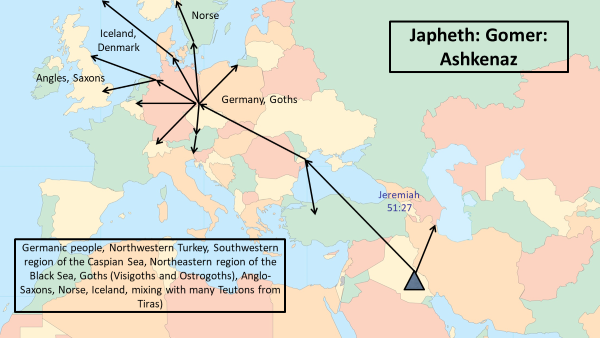
Figure 1. Migration of Ashkenaz son of Gomer.

Figure 2. Migration of Gomer and his son Riphath.
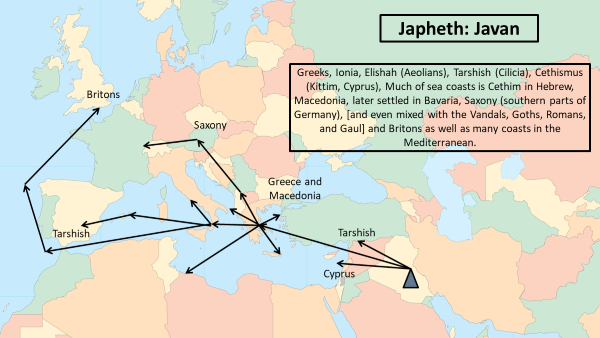
Figure 3. Migration of descendents of Javan.
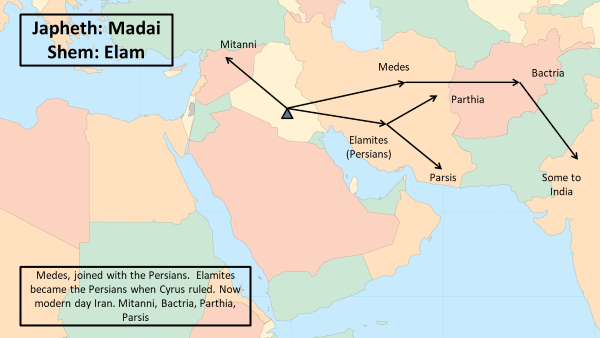
Figure 4. Migration the descendants of Madai son of Japheth and Elam son of Shem.
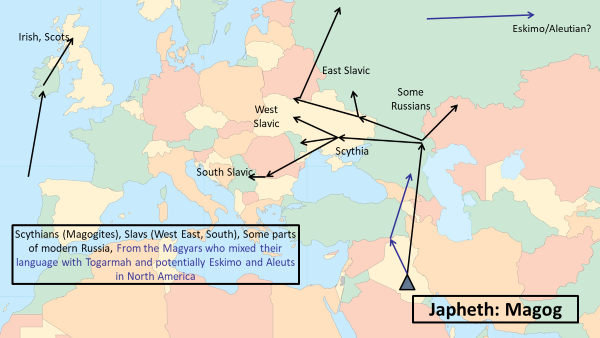
Figure 5. Migration of Magog’s descendants.

Figure 6. Migration of Meshech’s descendants.
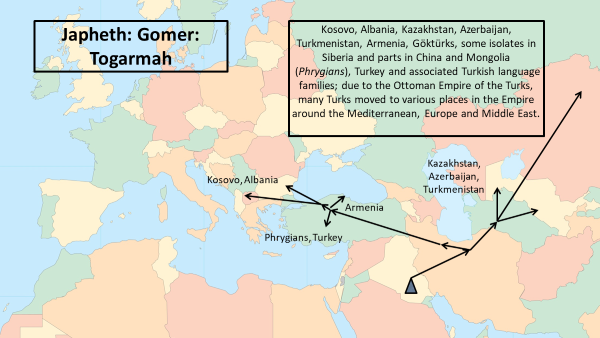
Figure 7. Migration of Togarmah son of Gomer.

Figure 8. Migration of Tubal’s descendants.
Descendents of Shem
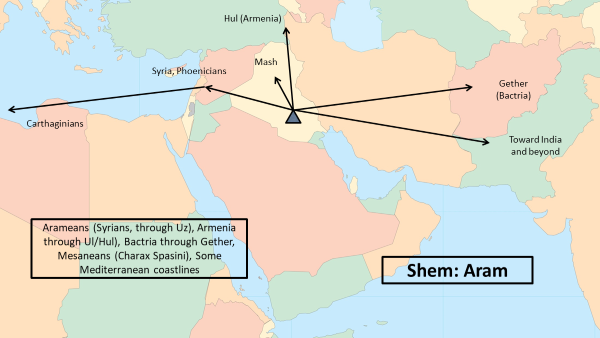
Figure 9. Migration of Aram’s descendants.
Descendents of Ham
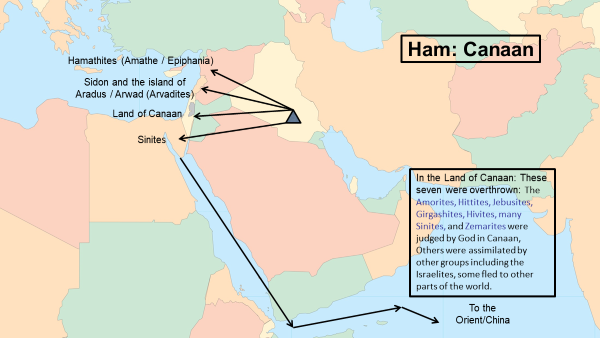
Figure 10. Migration of Canaan.
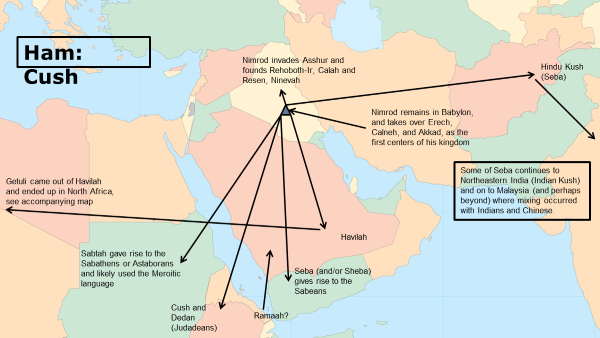
Figure 11. Migration of Cush son of Ham.
* Images courtesy Bodie Hodge. Maps appear according to ages of sons of Noah and areas of their habitation.
Hodge documents records of the Iberians as coming from Japheth’s sons, primarily Tubal (Figure 8),24 but also Gomer and Gomer’s son Ripath (Figure 2).25 It is quite likely that these groups settled different parts of the Iberian Peninsula at fairly close time intervals, and then intermarried. Being originally founded by brothers, the different populations would have had a similar genetic profile. As we’ll see later, it appears that the Iberian Peninsula was the farthest west that people of the time migrated to, and the founders from Gomer had previously settled in France, Galatia (Turkey) and Romania, thereby creating a buffer for the Iberians, allowing them to be unmolested from war and invasion until much later in European history.
Turning now to the Eurasian Steppe, we see a bit of a mixture of peoples. Gomer’s son Togarmah and his descendants settled much of Turkey, Armenia, Azerbaijan, and Kazakhstan (Figure 7).26 Japheth’s son Magog settled much of Russia, Ukraine, and Hungary (Figure 5),27 and another of Japheth’s sons Meshech also settled parts of Russia, Finland, and Georgia (Figure 6).28 But Eurasia also had a lot of Hamitic ancestry, especially from two of Canaan’s sons—the Sinites and Hamathites (Genesis 10:17–18), who settled in parts of China, Mongolia, and Siberia (much of the Eastern Steppe region). There was also genetic input from Ham’s son Cush, some of whose decendants settled in northern India (Figure 11).29 Finally, we also have Semitic ancestry in this region through Elam who settled in Persia (Iran, Figure 4)30 and Aram, some of who settled in Bactria (Afghanistan, Uzbekistan and Tajikistan, Figure 9).
Now when you compare the above peoples from Genesis 10 with the genetic study of the Bell Beaker group from the Eurasian Steppe, you notice some striking similarities. Three different genetic groups (Semitic, Hamitic, and Japhetic) came from areas where biblical and secular history records them migrating to (the Western and Eastern Steppe, the Levant and Turkey, as well as Iran and “crossroad” countries like India and Afghanistan). The Iberian Bell Beaker group’s isolation and distinction also makes sense from a biblical worldview, especially if they had no intermarriage with other people groups for several generations but eventually did have some genetic interaction at a late stage as the Steppe Bell Beaker peoples moved west.
Even more striking is the British invasion by the Steppe Bell Beaker group. The genetics show that there was an almost complete turnover of people in a very short timeframe. The biblical evidence again correlates extremely well. Britain appears to have initially been settled (like Iberia) by Japheth’s sons and grandsons Tubal, Gomer, and Riphath, but also some later coastal migration, from Japheth’ s son Javan, who settled parts of southern Spain, moved through the Strait of Gibraltar and then settled parts of southern England (Figure 3).31 And like Iberia, due to geographical location, Britain was left undisturbed from invasion for a while. This coastal migration adding to British DNA is even mentioned in the Nature paper:
Neolithic individuals from southern France and Britain are also significantly closer to Iberian Early Neolithic farmers than they are to central European Early Neolithic farmers, consistent with a previous analysis of a Neolithic genome from Ireland. By modelling Neolithic populations and Mesolithic western European hunter-gatherers in an admixture graph framework, we replicate these results and show that they are not driven by different proportions of hunter-gatherer admixture. Our results suggest that a portion of the ancestry of the Neolithic populations of Britain was derived from migrants who spread along the Atlantic coast.32
Even the genetic affinity between the post-Bell Beaker Britons and the population in the Netherlands (mentioned above) shows up when looking at the post-Babel migrations of people groups. Japheth’s grandson Ashkenaz initially migrated to Turkey, but then moved northward to settle in areas on the Black Sea (Romania, Moldova, and Ukraine) where they conquered or mixed with some of the Hamitic and Semitic peoples (Figure 1).33 They then turned their attention westward and started to conquer and settle in most of Central and Western Europe.
Interestingly, the medieval Jewish name for Germany is Ashkenaz, and Jews of German or central European ancestry are still called Ashkenazi (Jews living in the land of Ashkenaz). But what makes the connection even more telling is that it appears that Ashkenaz’s grandson, Ingaevon, or great-grandson, Istaevon, settled in Northern Germany and then spread out from there to Denmark and the Netherlands. From there, no later than the eighth generation from Ashkenaz (Suevus), they had colonized Sweden and conquered England.34 The timeline for this is somewhere between 1900–1652 BC, according to historian James Anderson, which fits right in to the end of the Ice Age and early post-Ice Age in northern Europe.35
When the evolutionary assumptions that dominate secular archaeology and historical reconstructions are jettisoned and actual biblical and secular genealogies are studied, the timeframe for migrations, colonization, trade/cultural interaction, and genetic data seems to align quite well.
We can be confident when we read through Genesis 10 and 11 that we are looking at true history and peoples which can be traced (in this particular case) to post-Babel Eurasians. The Table of Nations (as Genesis 10 is sometimes called) really is an accurate record of post-Babel people groups (and their migrations), and sometimes as this Bell Beaker study pointed out, as in the case of the Iberians, “the pots did the moving, not the people,”36 but in England, with a greater than 90% population turnover, sometimes it was the people that did the moving. Babel (and Genesis 10) explains those differences.
Footnotes
- Ewen Callaway, “The Battle for Common Ground,” Nature, March 28, 2018, https://www.nature.com/magazine-assets/d41586-018-03773-6/d41586-018-03773-6.pdf; and Iñigo Olalde et al., “The Beaker Phenomenon and the Genomic Transformation of Northwest Europe,” Nature 555 (March 8, 2018): 190–196, doi:10.1038/nature25738.
- “History of West Kennet Long Barrow,” English Heritage, http://www.english-heritage.org.uk/visit/places/west-kennet-long-barrow/history/.
- The conventional dating is based on anthropological evolutionary assumptions and radiocarbon dating methods which also have built-in assumptions. All of the supposed stone age, bronze age and iron age time periods are post-Flood, and most are post-Babel. In Eurasia as this article is dealing with, we are looking at dates of c. 2200–1700 BC.
- Ewen Callaway, “The Battle for Common Ground,” Nature 555 (2018): 573.
- See footnote 3.
- See footnote 3.
- João Luís Cardoso, “Absolute Chronology of the Beaker Phenomenon North of the Tagus Estuary: Demographic and Social Implications,” Trabajos de Prehistoria 71, No. 1, (2014): 73, doi:10.3989/tp.2014.12124.
- “Bell Beaker Culture,” Indo-European.info, https://indo-european.info/wiki/index.php/Bell_Beaker_culture.
- Olalde et al., “The Beaker Phenomenon and the Genomic Transformation of Northwest Europe,” 190–192.
- See footnote 3.
- See footnote 3.
- Olalde et.al, “The Beaker Phenomenon and the Genomic Transformation of Northwest Europe,” 190.
- Ibid., 191.
- Ibid., 193.
- Ibid., 194.
- Ewen Callaway, “The Battle for Common Ground,” 574.
- Ibid.
- Wolfgang Haak et al., “Massive Migration from the Steppe Was a Source for Indo-European Languages in Europe,” Nature 522 (June 11, 2015): 207, doi:10.1038/nature14317 (Abstract).
- Ewen Callaway, “The Battle for Common Ground,” 575.
- All Scripture references are from NKJV unless otherwise noted.
- David Menton and John UpChurch, “Who Were Cavemen?,” Answers 7, no. 2 (2012), https://answersingenesis.org/human-evolution/cavemen/who-were-cavemen/.
- Georgia Purdom, “How Are Cavemen Different?,” Answers 7, no. 2 (2012), https://answersingenesis.org/human-evolution/cavemen/how-are-cavemen-different/.
- Andrew Snelling and Mike Matthews, “When Did Cavemen Live?,” Answers 7, no. 2 (2012), https://answersingenesis.org/human-evolution/cavemen/when-did-cavemen-live/.
- Bodie Hodge, Tower of Babel (Green Forest Arkansas: Master Books, 2014), 169–171.
- Ibid., 149–151.
- Ibid., 157–159.
- Ibid., 160–163.
- Ibid., 173–174.
- Ibid., 129–131.
- Ibid., 133–134.
- Ibid., 165–168.
- Olalde, et al., “The Beaker Phenomenon and the Genomic Transformation of Northwest Europe,” 192.
- Hodge, Tower of Babel, 151–155.
- Ibid.
- James Anderson, Royal Genealogies (Westminster Hall, England, 1732), 441–442, https://archive.org/details/AndersonJRoyalGenealogiesOrTheGenealogicalTablesOfEmperorsKingsAndPrincesTo1732 (PDF).
- Ewen Callaway, “The Battle for Common Ground,” 576.

Answers in Genesis is an apologetics ministry, dedicated to helping Christians defend their faith and proclaim the good news of Jesus Christ.
- Customer Service 800.778.3390
- Available Monday–Friday | 9 AM–5 PM ET
- © 2026 Answers in Genesis

